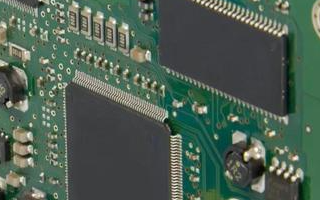November 03, 2020
2213
After the PCB design work is completed, it needs to be put into production. Before putting the board, the PCB designer must carry out self-checking and correctly handle the problems found out by the self-checking. If there are problems that cannot be individually determined during the processing, they should contact Relevant personnel communicate and resolve.

Self-check: PCB design post-processing
After the PCB layout is completed, the post-processing work that the designer needs to do includes the following aspects:
(1) DRC inspection: design rule inspection, through Checklist and Report and other inspection methods, focusing on avoiding major design defects such as open circuits and short circuits, and follow the PCB design quality control process and methods during inspection;
(2) DFM inspection: After the PCB design is completed, whether it is the processing of the bare PCB board or the patch assembly processing of the PCBA support board, it is necessary to use the relevant inspection tool software or Checklist to check the processing-related design;
(3) ICT design: Some PCB boards will undergo ICT testing in batch processing and production, so such PCB boards need to add ICT test points in the design stage;
(4) Silk screen adjustment: Clear and accurate silk screen design can improve the convenience and accuracy of subsequent testing, assembly and processing of circuit boards;
(5) Drill layer labeling: The information labelled on the Drill layer is the processing requirements drawings provided to the PCB processing factory for PE, which needs to follow industry specifications to ensure the accuracy and completeness of the Drill processing information;
(6) PCB design file output: the final file of PCB design needs to be output as different types of packaging files according to the specifications for subsequent testing, processing, and assembly links;
(7) CAM350 inspection: The CAM file (also called Gerber file) that the PCB design outputs to the PCB processing factory needs to use the CAM350 software to carry out the design review before the board is projected.
Other matters to be dealt with before listing
1. QA review within the group
After receiving the boarding process, the QA in the group first confirms that the designer has fully self-checked, and if the processing is not completed, it returns to the process and requires the designer to submit the process again after completion.
Review and record the review results, handling opinions, etc. If the review fails, the process is returned to the designer.
The QA review opinions within the group shall also be entered into the veneer design review record database.
2. Short circuit and open circuit problem inspection
(1) There is a single-point grounding; the plane layer is hollowed out; when modifying the treatment of the pad, the pad, the pad, and the thermal pad, be careful, and write the processing result into the ground source division of the design file, which is conducive to self-inspection and QA review And the next time the board is changed.
(2)When the electric strata of P software is negatively divided, it must be carefully checked. The method of checking the negative film of the electrical layer with P software is as follows: Set the PLANE NET assigned to the same layer to different colors.
Only display all the elements of the layer to be checked.
Check whether the network crosses the partition (different colors are in the same partition), if not, it means the partition is successful.
If cross-segmentation occurs, you need to edit the PLANE THERMAL attributes of the pads and vias of the cross-area so that no faceplate is generated in the area, and then ensure their connectivity through wiring.
(3)Places with open windows or slots must add wiring forbidden areas to prevent the wiring from being cut to the point of disconnection. Structural elements
The forbidden area defined in the figure must also meet the requirements.
(4)The correct DRC must be set and all DRC checks must be turned on.
3. Complete the filling of process data and file submission as required, including board name, version number, quantity, number of layers, minimum line width/line spacing, etc.